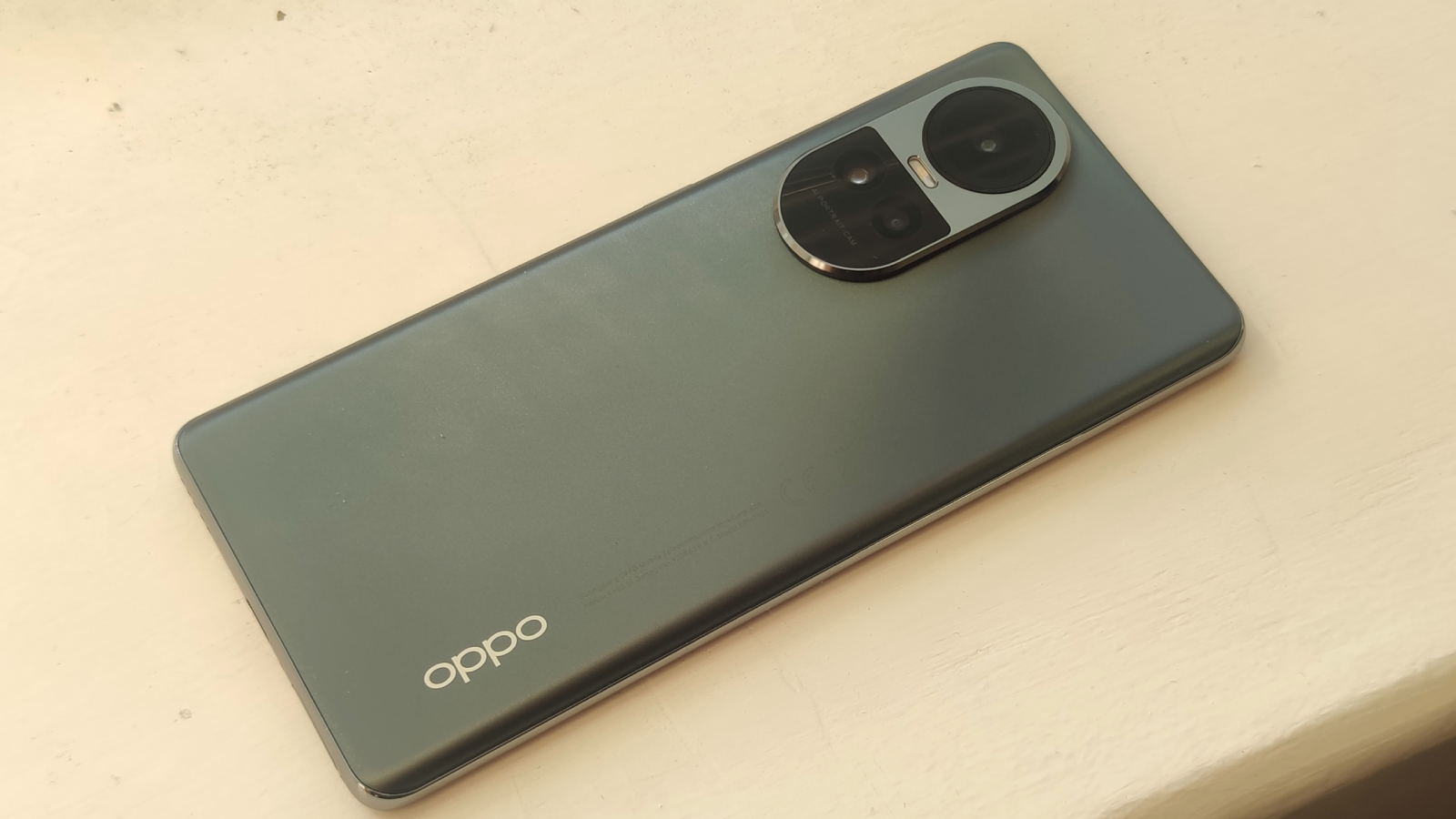
Oppo Reno 10 two-minute review
If there’s one phone brand with whom you never know what you’re getting, it’s Oppo, but with its latest mid-range mobile it’s managed to make a phone that’ll (mostly) wow you, especially if you’re looking for a great device without spending too much.
The Oppo Reno 10 is the latest of Oppo’s mid-tier mobiles to launch globally, after the Oppo Reno 8 in 2022 – the brand tends to alternate between global releases and China-only ones. And for the first time in many generations, this is a Reno phone that’s really worth checking out.
At its core, the Oppo Reno 10 is a premium phone with a price tag that’s a lot lower than one would expect. It's easily one of the best cheap phones on the market, embarrassing rival handsets from the likes of Samsung, Apple and Google by just how far ahead it is. It feels better in the hand, performs faster, offers a better display, lasts longer and looks more appealing, though it does have two major weaknesses that keep it away from a higher score.
The design is a large draw of this phone. Oppo has brought the curved-edge display design back to low-cost phones, yet has managed to avoid many of the issues common to this feature, like accidental side presses.
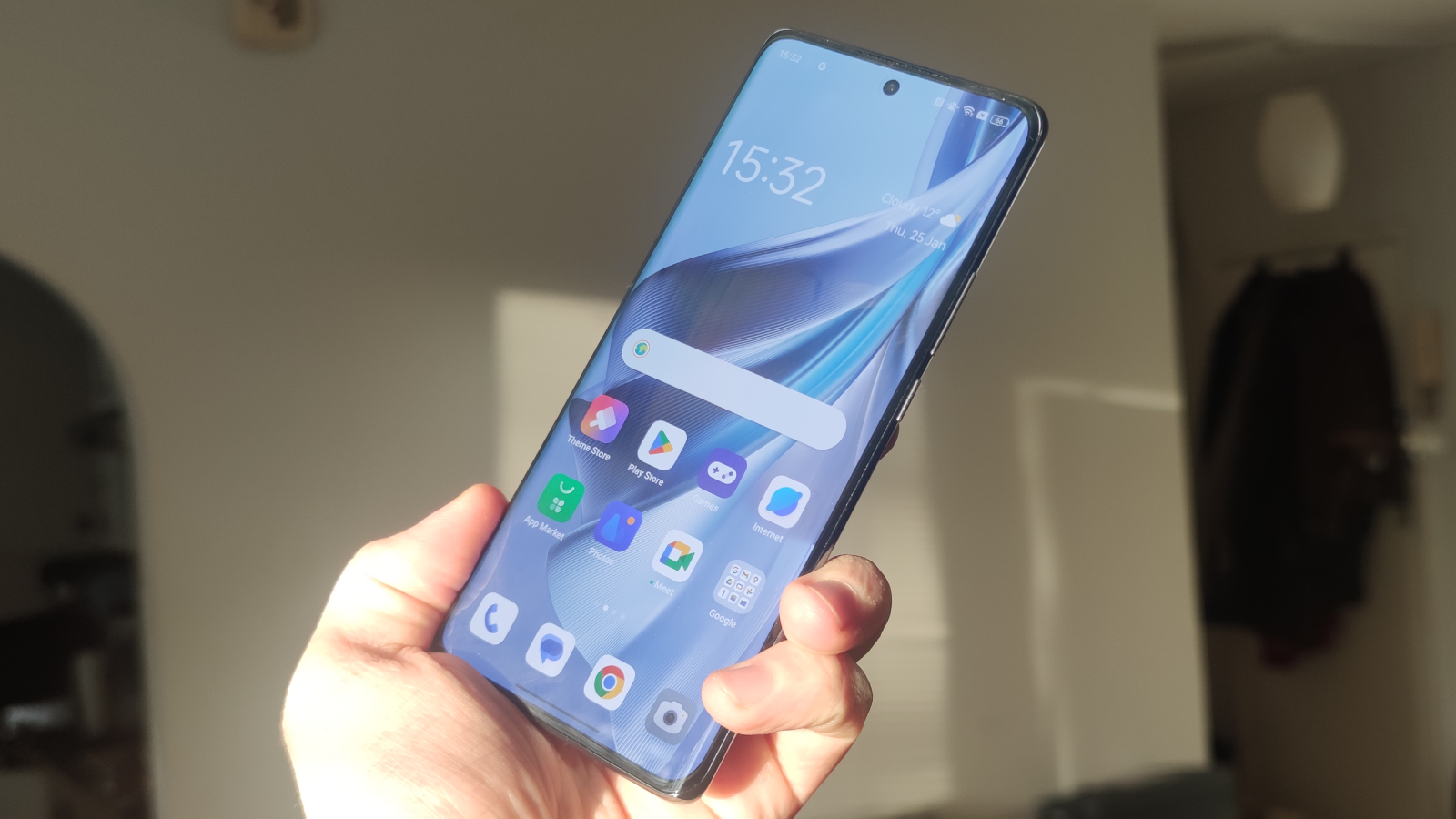
The Reno 10 may not have a top-end chipset but it works wonderfully for gaming, and streaming videos is just as much of a treat thanks to its top-spec screen. Its battery lasts a long time, and it charges quickly. What’s not to like?
Well, some things aren’t to like; one of them is the camera. Oppo has aped top-end mobiles by introducing a telephoto camera for zoom photography – this is such a rarity that I wish I could be singing from the rooftops about the Reno 10’s camera prowess, but it joins an utterly underwhelming camera line-up. Photos taken on the Reno 10 are dull, grainy and lifeless.
In its software, Oppo decided to copy not premium phones, but the Great Pacific Garbage Patch. ColorOS is absolutely littered with pre-installed bloatware apps – I counted 30 on my phone when I first booted it up! At its core, the software is great, with easy navigation and handy customization features, but it’s hard to sail through without getting yourself caught on all its trash.
If you scarcely use your phone camera, and don’t mind spending a good chunk of your phone set-up time wearing out your thumbs by deleting countless random games and shopping apps, then the Oppo Reno 10 will be an absolutely fantastic pick for you. Even those two major pitfalls are easy enough to forgive when you consider the phone’s competitive low price.
But don’t say I didn’t warn you!
Oppo Reno 10 review: price and availability
- Released in August 2023
- Costs £399 / AU$749 (around $500)
- On sale in UK and Australia, not US
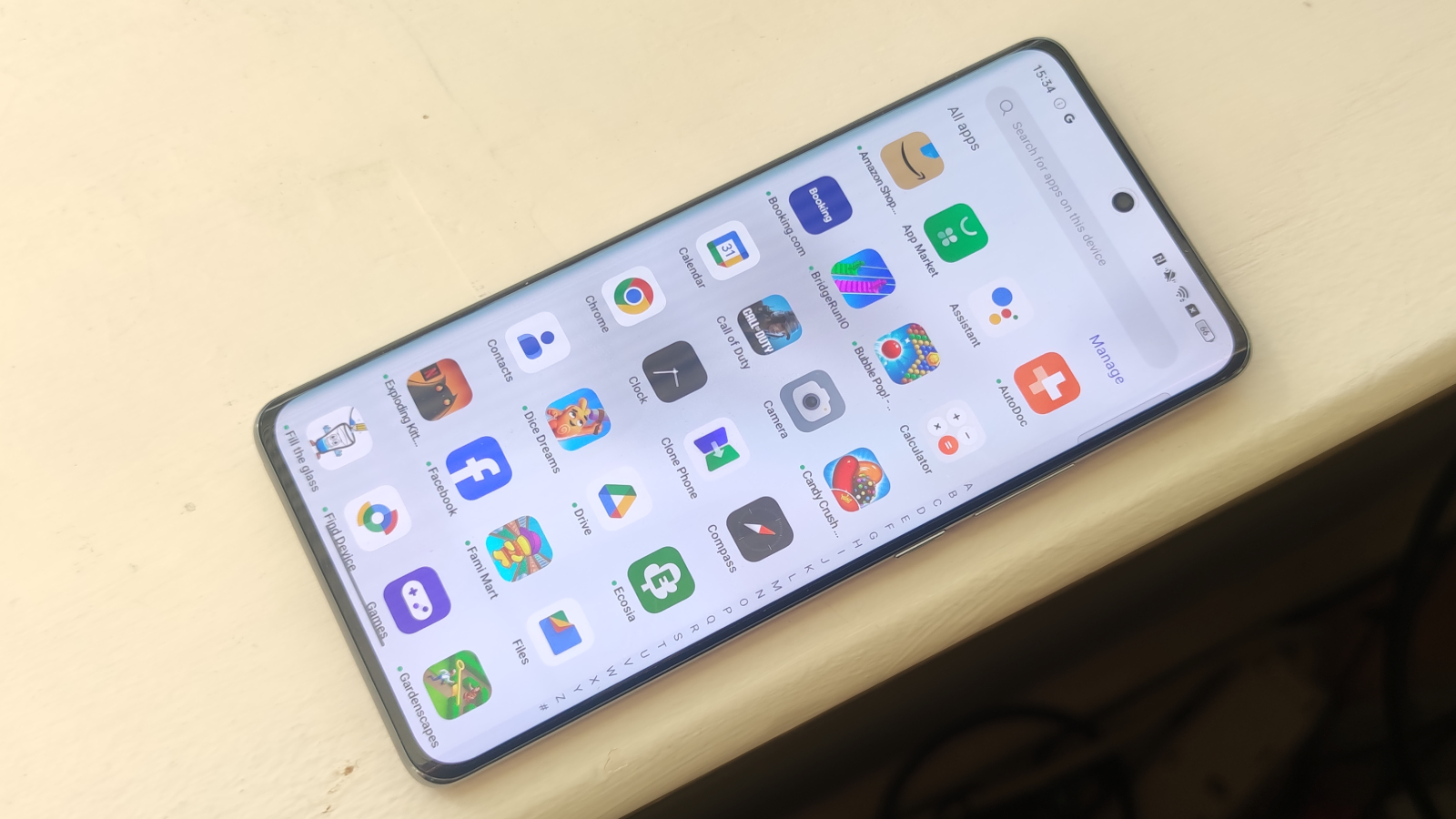
The Oppo Reno 10 was unveiled in August 2023, and like many of the brand’s phones, it’s available in the UK and Australia but not the US.
You can pick up the phone in its sole configuration for £399 / AU$749 (around $500), which is a small but welcome discount from the Oppo Reno 8’s £419 / AU$999 – that was the last Reno mobile that launched globally, as Oppo generally reserves odd-numbered entries for Chinese markets.
At that price, the Reno sits at the cheaper end of the vaguely defined ‘mid-range’ mobile market. In the UK it undercuts some big-name rivals like the Google Pixel 7a (starts at $499 / £449 / AU$749) or the most recent iPhone SE (starts at $429 / £419 / AU$719), though as you can see its Australian price is on par with its peers.
- Value score: 4 / 5
Oppo Reno 10 review: specs
A budget phone with premium specs, here's how the Oppo Reno 10 looks on paper:
Oppo Reno 10 review: design
- Curved-edge display adds premium feel
- A touch on the big side
- Camera bump protrudes quite far
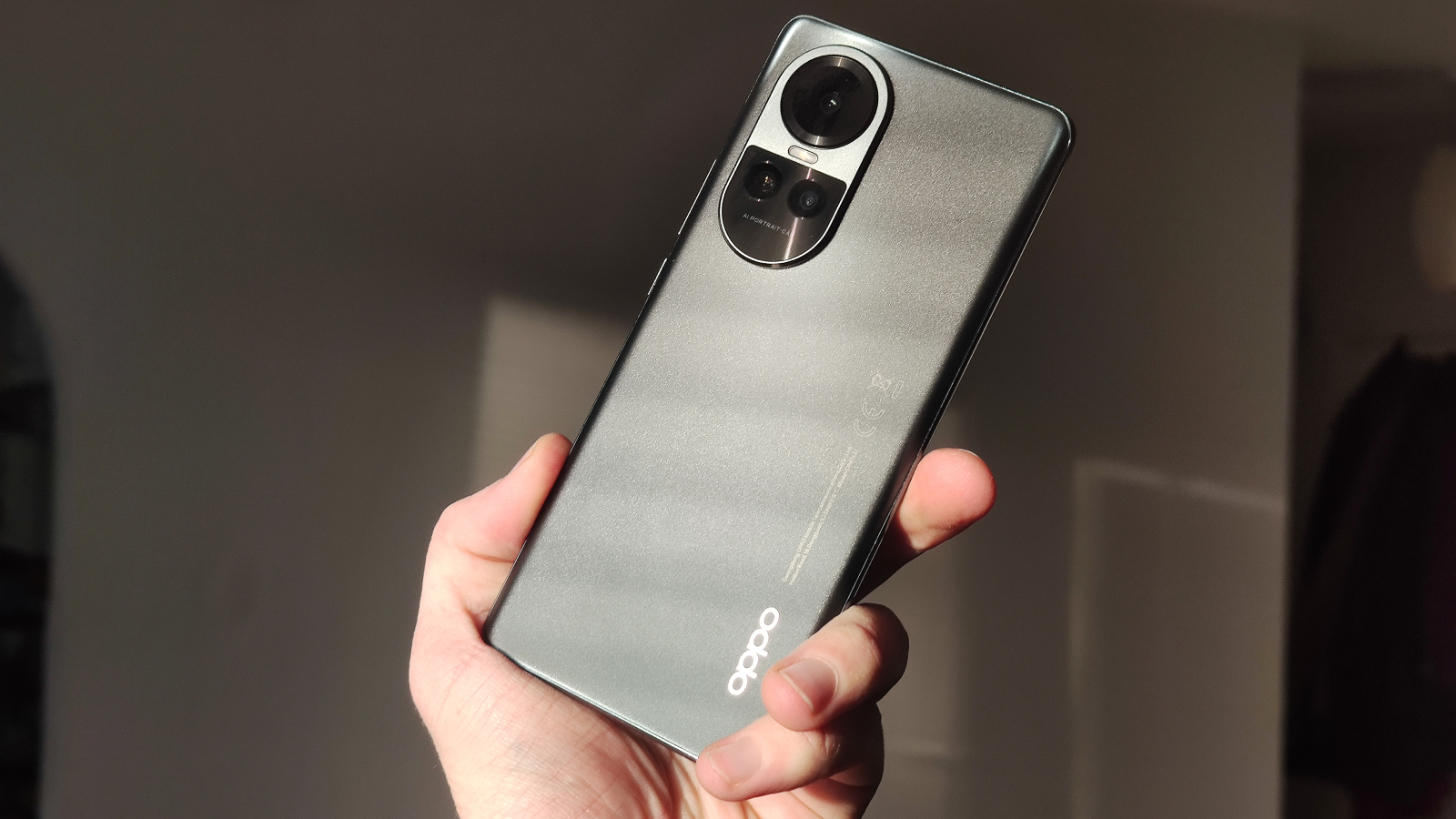
Oppo is one of a small number of mobile phone companies offering curved-edge smartphones at low prices – that’s right, the Reno 10 has a display that tapers at the edge. This makes it more comfortable to hold in your hand than many other rival devices, and gives it a premium sheen – plus, in the Reno, it’s not so curvy that you’re at risk of accidentally pressing the sides. Not once in my testing period did I incur the ‘accidental side press’ that can plague so many curved-edge mobiles.
If anything, your issue here is going to be hand strain, because the Reno 10 is a pretty big device. It measures 162.4 x 74.2 x 8mm, and weighs 185g, so while it’s relatively thin and lightweight for a phone of its size, people with smaller hands may struggle to use its extensive display size.
Talking of big, the Reno 10’s rear camera bump is pretty huge. It’s a large lozenge-shaped protrusion that houses all three of the lenses and a flash, and it sticks out a fair way from the phone too. You won’t be putting this mobile down flat on a surface, unless it’s in a case.
Glass houses the back and front of the phone, making this mobile feel pretty premium compared to most same-price rivals. But it’ll be a little more fragile than a plastic device, so a case is advised. In the UK, it only comes in a pretty plain gray color too, imaginatively titled Silvery Gray, so a case will give it some life too – more vibrant alternatives are available in some countries though.
The volume rocker and power button are both housed on the right edge of the mobile – I could reach both at a stretch, though to unlock the phone you need to use the in-screen fingerprint scanner that felt too low-down on the display to use naturally.
The Oppo has a USB-C port on its button edge for charging and data transfer but no 3.5mm headphone jack in sight. You’ll have to use an adaptor if you want to use wired headphones or speakers.
- Design score: 4 / 5
Oppo Reno 10 review: display
- Chunky 6.7-inch screen
- FHD+ resolution and 120Hz refresh rate
- Max brightness could be a little higher
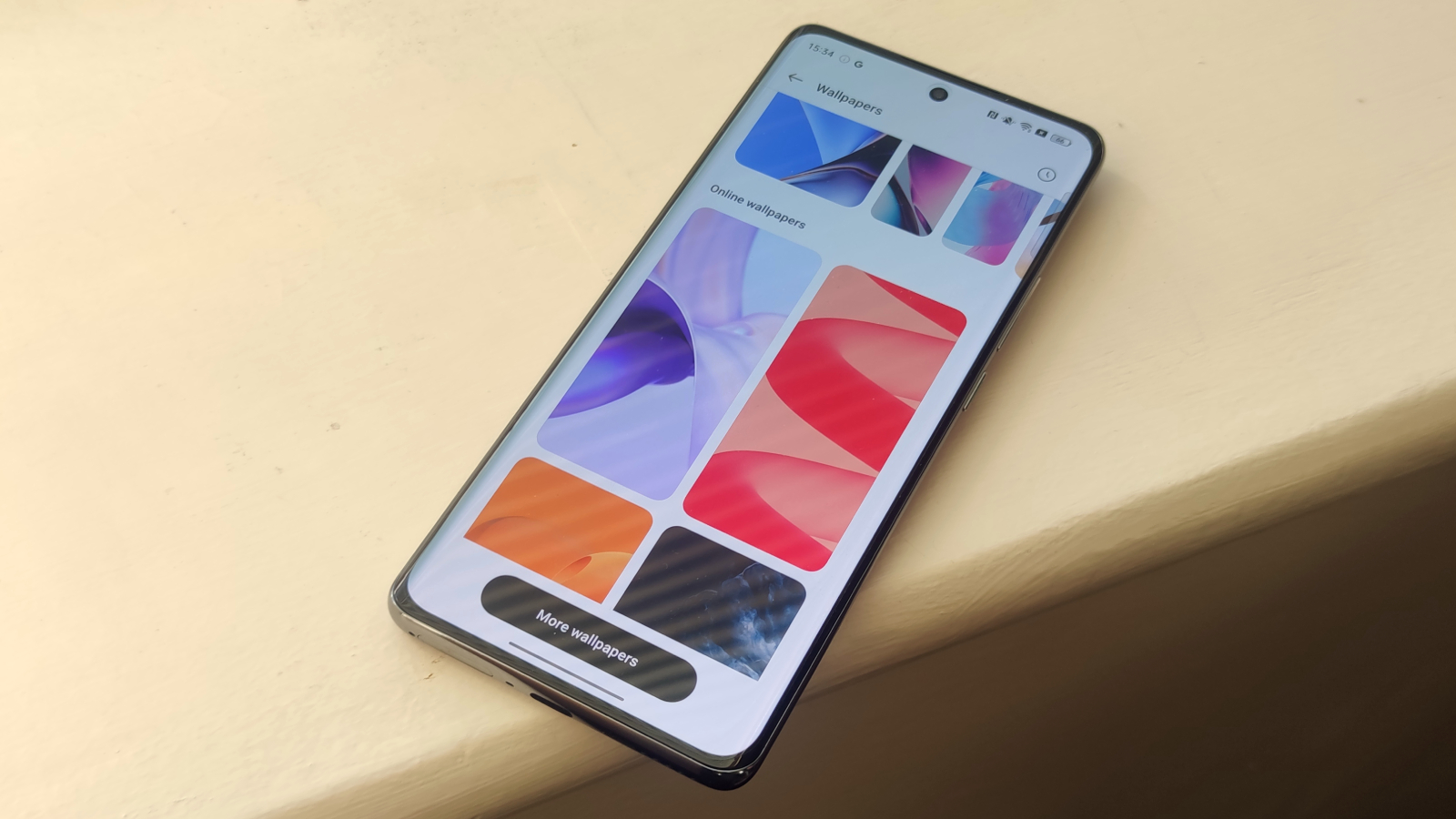
The Oppo Reno 10’s size is partly because of its large display: at 6.7 inches diagonally, this is a big display, and you won’t find bigger on phones at this price.
It’s a good-looking screen, with a FHD+ resolution (1080 x 2412 pixels) making your games or videos look clear, and the 120Hz refresh rate makes motion appear smooth.
The HDR10+ certification is just a cherry on top – whether you’re binging a TV show, playing a game, checking out pictures you took or just scrolling through social media, this big and bold display is one of the best you’ll find on a phone at this price point.
If I have a gripe, it’s that the maximum brightness is a little low. At 950 nits, it’s fine for if you’re inside or out and about on an overcast day, but even in this latter circumstance I had to turn the brightness to max to see the screen easily. On a sunny day, you may find it a little hard to see.
- Display score: 3.5 / 5
Oppo Reno 10 review: software
- Horrendous bloatware issue
- Quick to navigate and handily laid out
- Lots of customization options
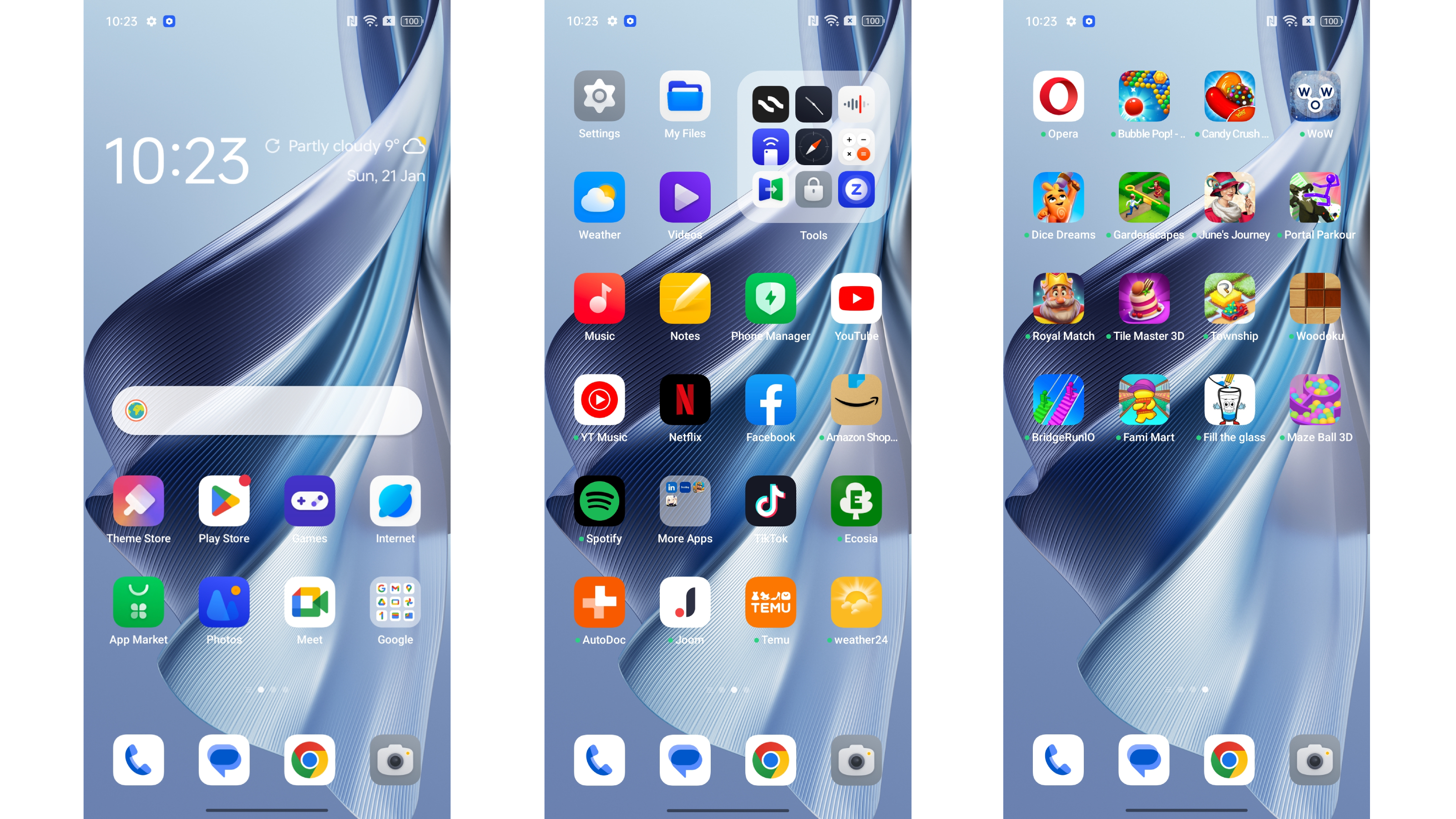
The Oppo Reno 10 comes with the newest Android 13 software pre-loaded, with Oppo’s own ColorOS plastered over the top. This Android fork has a similar layout to stock Android, but with a distinctive design to give the software a more playful and energetic tone. Oh, and it has a few choice changes over the base Google-designed software.
I’m talking about bloatware – the Reno has loads. For those that don’t know, bloatware refers to pre-installed apps on the phone beyond the basics that you need for functionality (like a camera app, photo library, Play Store etc). Some companies choose to pack their phones with their own apps, or third-party licensed ones, and in this phone Oppo seems intent on taking that to the logical extreme.
When I first booted up the phone, it was already jam-packed with random games, shopping apps, entertainment platforms, and more – I counted over 30. Some of these are ones I’d choose to install, and it was useful not having to manually download Netflix, but the time I saved in having the streaming service pre-installed was more than made up for in all the unknown apps I had to delete.
Once you’ve worn out your thumbs deleting ‘June’s Journey’ and ‘Portal Parkour’, ColorOS is actually a pretty great operating system. Its buttons, both on the swipe-down quick settings and notifications panels, as well as on the home page, are bold and easy to understand at a scan. Navigation is easy thanks to a handily-accessible app drawer plus well-placed search options. And there’s lots of customization with bespoke widgets, plenty of built-in wallpaper options and ‘style’ options that let you change the always-on display, font, icon and fingerprint animations.
Thanks to the 120Hz display and powerful internals, navigating the phone’s software is a breeze. ColorOS is great to use for people who find stock Android a bit plain – it’s just a shame about the bloatware.
- Software score: 2.5 / 5
Oppo Reno 10 review: cameras
- 64MP main, 32MP zoom and 8MP ultra-wide cameras
- Pictures are unimpressive: lack color, detail, are blown out
- 32MP snapper on front which suffers from same traits
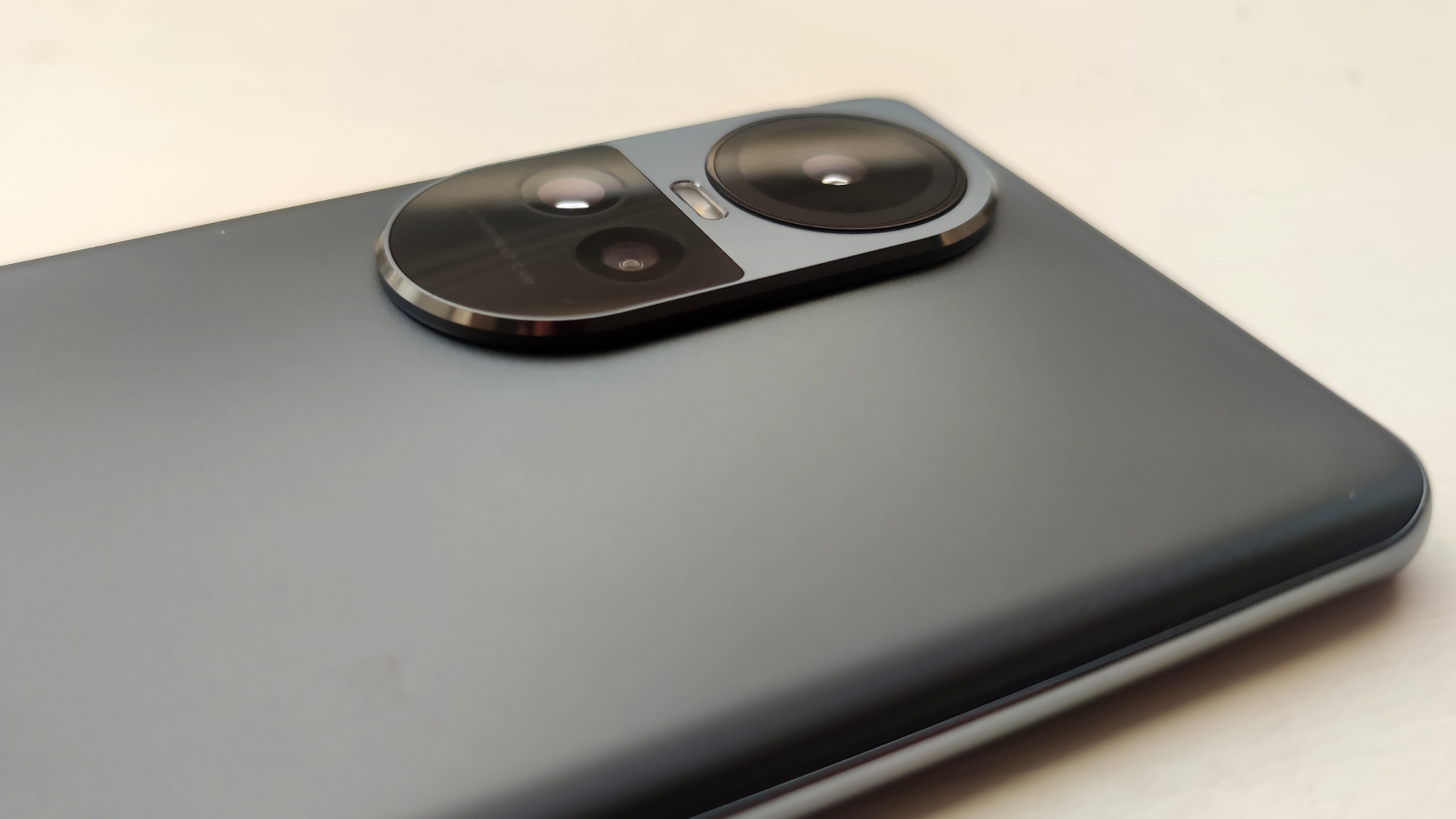
The Oppo Reno 10 makes a staggering leap in the area of budget camera phones: it’s the first low-cost mobile in roughly five years that comes with a telephoto lens, for optical zoom photography (usually when you zoom in on a phone camera it just zooms digitally, via cropping, which quickly loses detail).
This is a 32MP f/2.0 snapper with a lens for 2x optical zoom, and it joins the main 64MP f/1.7 and 8MP f/2.2 ultra-wide cameras to round out the trio. It’s understandable to get excited about this lens tripartite – it’s the same combo that premium mobiles from Samsung and Apple use – but it sadly doesn’t save the Oppo from camera mundanity.
There’s nothing offensively bad with photos taken on the Reno 10, but they’re noticeably lacking. The colors look washed out, darker areas lack detail, and images could look surprisingly grainy – this is all with HDR turned on. You also have to hold the phone still for longer to capture a picture than you’d think, as my camera reel was full of blurry misfires.
Talking of misfires, there’s Night mode, which somehow makes night-time pictures look a lot worse. You’ll see two pictures taken at night below; the first is using the normal camera without tweaking settings. As you can see the water is sharp, the light reflecting in it is distinct and fades out, and the contrast between the darker and brighter areas brings your attention to the center. Then there’s the night mode image which turns it into an oil pastel painting.


To give Oppo props for anything, it’s that there’s parity between lenses: you can zoom in to 2x and all the same issues from the main camera are present. Still, it’s nice to have this option for versatile photography. That’s not so true for the ultrawide lens which, with its 8MP sensor, loses too much information to be worth using.
The front of the phone wields a 32MP f/2.4 wide camera, and photos on this bore better fruit than on its rear siblings, but only slightly. Snaps are sharp and, in Portrait mode the digital bokeh is accurate to the body. However, brighter backgrounds in selfies were often blown out, and again colors weren’t rich enough. You’ll see two selfies in the camera gallery below – the shirt I’m wearing is meant to be forest green.
The Oppo Reno 10 records video at 4K/30fps or 1080p/60fps, and it also packs all the standard phone camera options: slow-mo (1080p/480fps or 720p/960fps), panoramic photography, time lapse and Pro mode. It also has an Extra HD mode so you can take pictures at 64MP instead of its default pixel-binned option.
- Camera score: 2.5 / 5
Oppo Reno 10 camera samples








Oppo Reno 10 review: performance and audio
- Handy Dimensity 7050 chipset plus 8GB RAM
- Handles games and other tasks well
- Bluetooth 5.3, adequate speakers but no headphone jack
The Oppo Reno 10 performs just about as well as you could hope a low-cost smartphone to – unless you spend more time playing mobile games than you do outdoors, you’ll find this phone absolutely fit for purpose.
The phone packs a mid-range Dimensity 7050 chipset, paired with 8GB RAM and 256GB storage. You can boost the RAM by an extra 8GB by using a RAM boost feature that temporarily converts your storage into extra mobile power, which will give you some extra oomph until you fill up your phone’s data.
In the Geekbench 6 benchmark test, the phone returned a middling multi-core score of 2,360, but in actual use, it worked perfectly well. In popular games like Call of Duty: Mobile and PUBG Mobile, the device performed admirably, never overheating, lagging or stuttering. If you’re a mobile gamer, you won’t feel let down here.
Oppo has a games mode that lets you boost processing power, monitor your phone’s vital signs and block notifications, but even without enabling this, the device felt great to play games on.
As previously stated there’s no 3.5mm headphone jack. Instead for audio, you can use the handset’s Bluetooth 5.3 connection for phones or speakers, or rely on its in-built speakers. These latter are nothing to write home about but they’re fit for purpose for games, calls, voice notes or other tasks like that.
- Performance score: 3.5 / 5
Oppo Reno 10 review: battery life
- Big 5,000mAh battery
- Up to two days of use
- 67W charging is lovely and fast
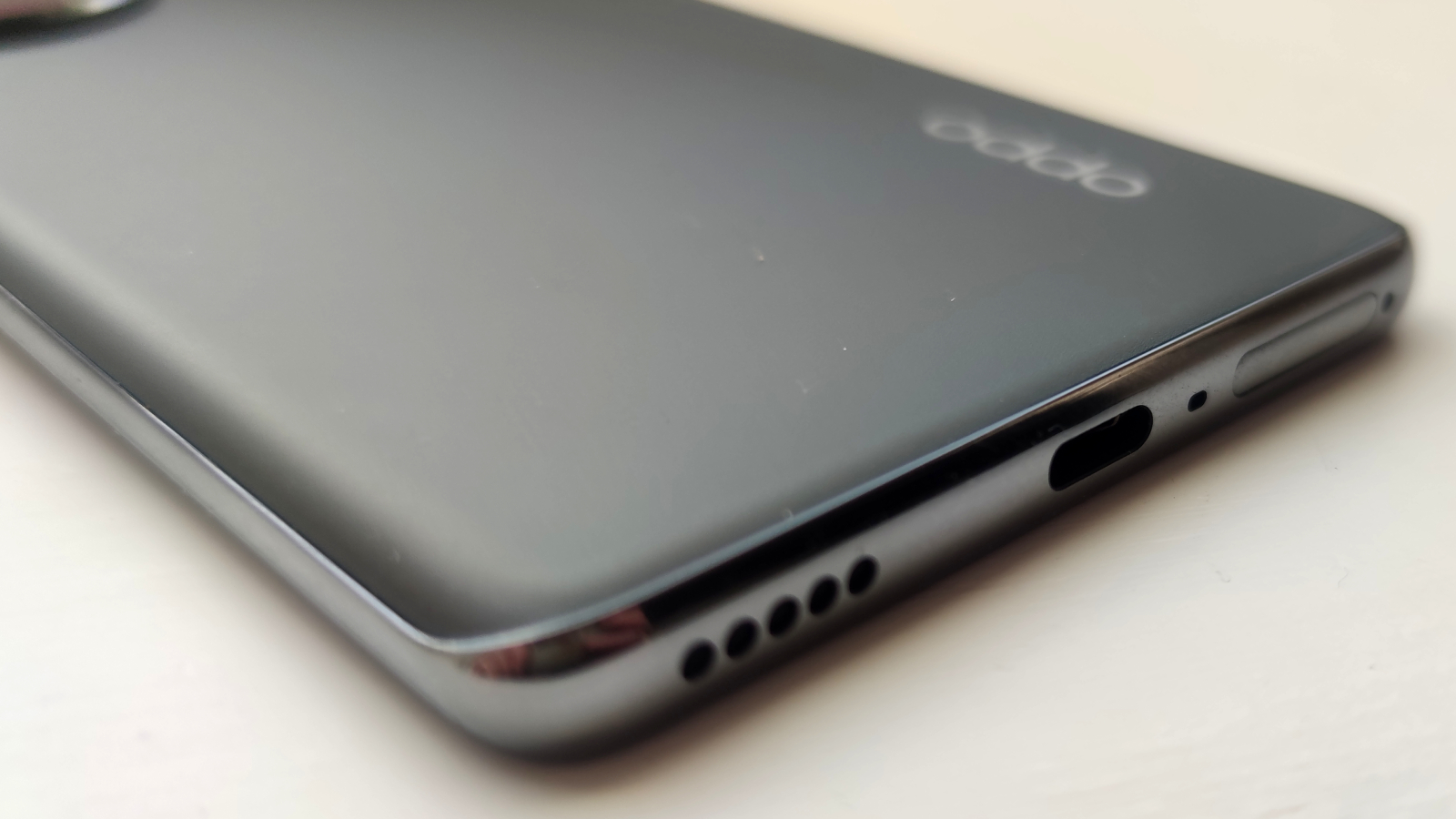
Like the vast majority of budget phones, the Oppo Reno 10 packs a 5,000mAh battery, which is about as big as you’ll get on a mainstream phone.
This is more than enough power to last the device through the day under normal use, and even heavy game-playing sessions won’t jeopardise its lasting power (well, to an extent). If you’re frugal, you’ll be able to see the phone through two days of use before a charge is required, but most people won’t last that long.
Thankfully, powering up the phone is swift, thanks to one of the fastest charging speeds you’ll see in a budget phone. That’s 67W, and your phone will power from empty to full in just over half an hour with it. An additional promise Oppo is throwing your way is that the phone should keep its battery capacity high for longer, which is often an issue with fast-charging phones; according to the company, the capacity will still be above 80% of its maximum after 1,600 charges and discharges, or about four years of use.
- Battery score: 4 / 5
Should you buy the Oppo Reno 10?
Buy it if...
Don't buy it if...
Oppo Reno 10 review: also consider
Considering other mobiles beyond the Oppo Reno 10? Here are some others you could look into, that all cost the same as, or a tiny amount more than, the Reno.
How I tested the Oppo Reno 10
- Review test period = 2 week
- Testing included = Everyday usage, including web browsing, social media, photography, video calling, gaming, streaming video, music playback
- Tools used = Geekbench 6, Geekbench ML, GFXBench, native Android stats
The testing period for the Oppo Reno 10 was roughly two weeks, which doesn't time before the fortnight for setting up the device and getting it through a few battery cycles, and time spent using the phone while writing the review.
To test the phone, I used it as a normal owner would: I took it on walks to test the camera, watched TV shows using it, played games at home on it. I also put it through some limited benchmark and timing tests, though kept these to a minimum as they don't usually reflect actual use.
I've been writing about phones at TechRadar for over five years now, after joining in early 2019, and have used Oppo's Reno phones since the first-gen Reno 10x Zoom up until the present day, including the last Reno phone to release in the UK, the Reno 8. I've also used phones from every other mainstream company, which helps with comparisons and with understanding all the phones out there right now.
First reviewed January 2023







